https://github.com/cran/unmarked
Tip revision: 39d01bb5ea8196f0eb4f7036b3d4a956bc156290 authored by Richard Chandler on 16 February 2013, 00:00:00 UTC
version 0.10-1
version 0.10-1
Tip revision: 39d01bb
unmarkedFit-class.Rd
\name{unmarkedFit-class}
\Rdversion{1.1}
\docType{class}
\alias{unmarkedFit}
\alias{unmarkedFit-class}
\alias{getData}
\alias{getData,unmarkedFit-method}
\alias{hessian}
\alias{hessian,unmarkedFit-method}
\alias{hist,unmarkedFitDS-method}
\alias{mle}
\alias{mle,unmarkedFit-method}
\alias{names,unmarkedFit-method}
\alias{nllFun}
\alias{nllFun,unmarkedFit-method}
\alias{parboot,unmarkedFit-method}
\alias{plot,unmarkedFit,missing-method}
\alias{profile,unmarkedFit-method}
\alias{residuals,unmarkedFit-method}
\alias{residuals,unmarkedFitOccu-method}
\alias{residuals,unmarkedFitOccuFP-method}
\alias{residuals,unmarkedFitOccuRN-method}
\alias{update,unmarkedFit-method}
\alias{update,unmarkedFitColExt-method}
\alias{update,unmarkedFitPCO-method}
\alias{update,unmarkedFitGMM-method}
\alias{sampleSize}
\alias{sampleSize,unmarkedFit-method}
\alias{unmarkedFitOccu-class}
\alias{unmarkedFitOccuFP-class}
\alias{unmarkedFitPCount-class}
\alias{unmarkedFitDS-class}
\alias{unmarkedFitMPois-class}
\alias{unmarkedFitPCO-class}
\alias{unmarkedFitGMM-class}
\alias{plot,profile,missing-method}
\alias{show,unmarkedFit-method}
\alias{summary,unmarkedFit-method}
\alias{summary,unmarkedFitDS-method}
\alias{smoothed}
\alias{smoothed,unmarkedFitColExt-method}
\alias{projected}
\alias{projected,unmarkedFitColExt-method}
\alias{logLik}
\alias{logLik,unmarkedFit-method}
\alias{LRT}
\alias{LRT,unmarkedFit,unmarkedFit-method}
\title{Class "unmarkedFit" }
\description{Contains fitted model information which can be manipulated or
extracted using the methods described below.
}
\section{Slots}{
\describe{
\item{\code{fitType}:}{Object of class \code{"character"} }
\item{\code{call}:}{Object of class \code{"call"} }
\item{\code{formula}:}{Object of class \code{"formula"} }
\item{\code{data}:}{Object of class \code{"unmarkedFrame"} }
\item{\code{sitesRemoved}:}{Object of class \code{"numeric"} }
\item{\code{estimates}:}{Object of class \code{"unmarkedEstimateList"} }
\item{\code{AIC}:}{Object of class \code{"numeric"} }
\item{\code{opt}:}{Object of class \code{"list"} containing results from
\code{\link{optim}} }
\item{\code{negLogLike}:}{Object of class \code{"numeric"} }
\item{\code{nllFun}:}{Object of class \code{"function"} }
\item{\code{knownOcc}:}{unmarkedFitOccu only: sites known to be occupied}
\item{\code{K}:}{unmarkedFitPCount only: upper bound used in integration}
\item{\code{mixture}:}{unmarkedFitPCount only: Mixing distribution}
\item{\code{keyfun}:}{unmarkedFitDS only: detection function used by
\link{distsamp}}
\item{\code{unitsOut}:}{unmarkedFitDS only: density units}
}
}
\section{Methods}{
\describe{
\item{[}{\code{signature(x = "unmarkedFit", i = "ANY", j = "ANY",
drop = "ANY")}: extract one of names(obj), eg 'state' or 'det' }
\item{backTransform}{\code{signature(obj = "unmarkedFit")}: back-transform
parameters to original scale when no covariate effects are modeled }
\item{coef}{\code{signature(object = "unmarkedFit")}: returns parameter
estimates. type can be one of names(obj), eg 'state' or 'det'.
If altNames=TRUE estimate names are more specific. }
\item{confint}{\code{signature(object = "unmarkedFit")}: Returns confidence
intervals. Must specify type and method (either "normal" or "profile") }
\item{fitted}{\code{signature(object = "unmarkedFit")}: returns expected
values of Y }
\item{getData}{\code{signature(object = "unmarkedFit")}: extracts data }
\item{getP}{\code{signature(object = "unmarkedFit")}: calculates and extracts
expected detection probabilities }
\item{getFP}{\code{signature(object = "unmarkedFit")}: calculates and extracts
expected false positive detection probabilities }
\item{getB}{\code{signature(object = "unmarkedFit")}: calculates and extracts
expected probabilities a true positive detection was classified as certain }
\item{hessian}{\code{signature(object = "unmarkedFit")}: Returns hessian
matrix }
\item{linearComb}{\code{signature(obj = "unmarkedFit",
coefficients = "matrixOrVector")}: Returns estimate and SE on original
scale when covariates are present }
\item{mle}{\code{signature(object = "unmarkedFit")}: Same as coef(fit)? }
\item{names}{\code{signature(x = "unmarkedFit")}: Names of parameter levels }
\item{nllFun}{\code{signature(object = "unmarkedFit")}: returns negative
log-likelihood used to estimate parameters }
\item{parboot}{\code{signature(object = "unmarkedFit")}: Parametric
bootstrapping method to assess goodness-of-fit }
\item{plot}{\code{signature(x = "unmarkedFit", y = "missing")}: Plots
expected vs. observed values }
\item{predict}{\code{signature(object = "unmarkedFit")}: Returns predictions
and standard errors for original data or for covariates in a new
data.frame }
\item{profile}{\code{signature(fitted = "unmarkedFit")}: used by confint
method='profile' }
\item{residuals}{\code{signature(object = "unmarkedFit")}: returns residuals }
\item{sampleSize}{\code{signature(object = "unmarkedFit")}: returns number
of sites in sample }
\item{SE}{\code{signature(obj = "unmarkedFit")}: returns standard errors }
\item{show}{\code{signature(object = "unmarkedFit")}: concise results }
\item{summary}{\code{signature(object = "unmarkedFit")}: results with more
details }
\item{update}{\code{signature(object = "unmarkedFit")}: refit model with
changes to one or more arguments }
\item{vcov}{\code{signature(object = "unmarkedFit")}: returns
variance-covariance matrix }
\item{smoothed}{\code{signature(object="unmarkedFitColExt")}:
Returns the smoothed trajectory from a colonization-extinction
model fit. Takes additional logical argument mean which specifies
whether or not to return the average over sites.}
\item{projected}{\code{signature(object="unmarkedFitColExt")}:
Returns the projected trajectory from a colonization-extinction
model fit. Takes additional logical argument mean which specifies
whether or not to return the average over sites.}
\item{logLik}{\code{signature(object="unmarkedFit")}:
Returns the log-likelihood.}
\item{LRT}{\code{signature(m1="unmarkedFit", m2="unmarkedFit")}:
Returns the chi-squared statistic, degrees-of-freedom, and p-value from
a Likelihood Ratio Test.}
}
}
\note{ This is a superclass with child classes for each fit type }
\examples{
showClass("unmarkedFit")
# Format removal data for multinomPois
data(ovendata)
ovenFrame <- unmarkedFrameMPois(y = ovendata.list$data,
siteCovs = as.data.frame(scale(ovendata.list$covariates[,-1])),
type = "removal")
# Fit a couple of models
(fm1 <- multinomPois(~ 1 ~ ufp + trba, ovenFrame))
summary(fm1)
# Apply a bunch of methods to the fitted model
# Look at the different parameter types
names(fm1)
fm1['state']
fm1['det']
# Coefficients from abundance part of the model
coef(fm1, type='state')
# Variance-covariance matrix
vcov(fm1, type='state')
# Confidence intervals using profiled likelihood
confint(fm1, type='state', method='profile')
# Expected values
fitted(fm1)
# Original data
getData(fm1)
# Detection probabilities
getP(fm1)
# log-likelihood
logLik(fm1)
# Back-transform detection probability to original scale
# backTransform only works on models with no covariates or
# in conjunction with linearComb (next example)
backTransform(fm1, type ='det')
# Predicted abundance at specified covariate values
(lc <- linearComb(fm1, c(Int = 1, ufp = 0, trba = 0), type='state'))
backTransform(lc)
# Assess goodness-of-fit
parboot(fm1)
plot(fm1)
# Predict abundance at specified covariate values.
newdat <- data.frame(ufp = 0, trba = seq(-1, 1, length=10))
predict(fm1, type='state', newdata=newdat)
# Number of sites in the sample
sampleSize(fm1)
# Fit a new model without covariates
(fmNull <- update(fm1, formula = ~1 ~1))
# Likelihood ratio test
LRT(fm1, fmNull)
}
\keyword{classes}

